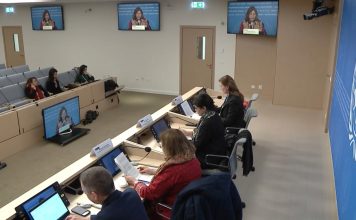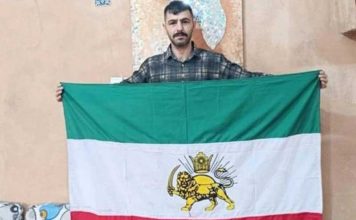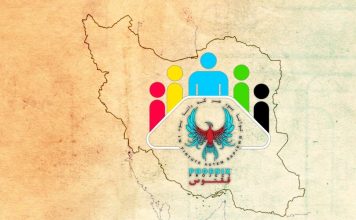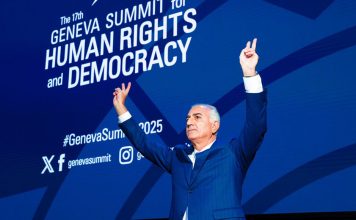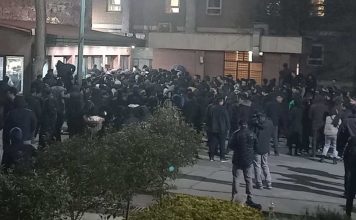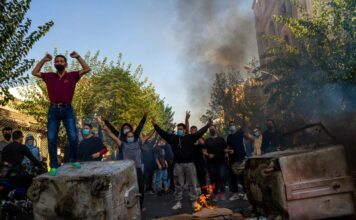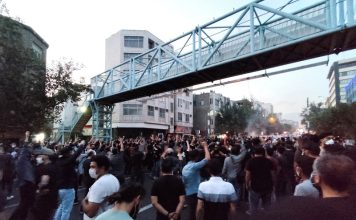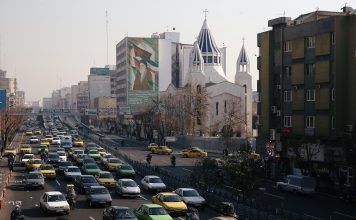
[aesop_content color=”#ffffff” background=”#0892d0″ columns=”1″ position=”none” imgrepeat=”no-repeat” disable_bgshading=”off” floaterposition=”left” floaterdirection=”up” revealfx=”off” overlay_revealfx=”off” aesop-generator-content=”Disclaimer: This asset – including all text, audio and imagery – is provided by The Conversation. Reuters Connect has not verified or endorsed the material, which is being made available to professional media customers to facilitate the free flow of global news and information.
“]Disclaimer: This asset – including all text, audio and imagery – is provided by The Conversation. Reuters Connect has not verified or endorsed the material, which is being made available to professional media customers to facilitate the free flow of global news and information.[/aesop_content]
SOURCE: THE CONVERSATION
The killing of Mahsa (Jina) Amini in Iran a year ago ignited massive protests by Iranians against the Islamic regime.
But civil unrest has been a feature of Iranian life since the early months of the regime, continuing to this day via different forms of resistance, including petitions, mass labour strikes, revolutionary songs and political graffiti.
A look back at the history of the women’s rights movement over the past five decades explains how the Women, Life, Freedom uprisings have stood on the shoulders of those preceding waves of protests.
Less than a month after the 1979 Iranian revolution, the Islamic Republic marked its dictatorship by enforcing compulsory hijab.
On International Women’s Day that same year, thousands of Iranian women protested against the obligatory hijab, chanting: “Where are women’s rights in the rise of freedom?”
The protest lasted eight days, but the struggle against the regime has continued for 44 years. Soon enough, Iranian women realized that the Islamic revolution would not in fact result in more freedom, but would instead dim its light as the regime persecuted thousands of protesters and activists.
These actions transformed the hopeful people of the Islamic revolution into the oppressed citizens of the Islamic regime.
One of the symbols of this widespread dismay was the depression and suicide of Homa Darabi, the feminist and political activist, child psychiatrist and academic.
Disappointed by the revolution and barred from all her positions, Darabi set herself on fire in front of the Administrative Court of Justice building in protest to the compulsory hijab.
Frustrated Iranians had hope for the reformist movement that emerged in the mid-1990s.
It involved feminist activists channelling their struggle against the misogynist regime via civil society institutions and accepted social practices.
In 2006, they organized a campaign to collect a million signatures demanding the repeal of laws that discriminated against women.
They insisted their campaign wasn’t politically motivated as they conformed to Islamic principles, and said they were merely acting as mediators between citizens and the state in their quest for gender equity.
Their strategy was to enlighten citizens in person about the Islamic Republic’s discriminatory laws against women, and ask them to sign their petition.
These feminists negotiated with ayatollahs and invited them to reinterpret Islamic sharia about women to be more aligned with modern-day Iranian society. They also met with reformist members of parliament to lobby for changes to laws that discriminated against women.
Although their one-million signature campaign made demands via the existing system, their efforts were met with violent attacks by police and the massive persecution of the activists.
This crackdown on the reformist campaign proved the Islamic republic had no intention of restoring rights to women.
If the 1979 revolution resulted in despondency for many citizens even as it spurred the reformist movement into civic activism, Iran’s pro-democracy Green Movement and its pervasive use of the internet were mirrored in the digital activism of Iran’s feminists.
After the government’s brutal suppression of the Green Movement in 2009, the only place left for resistance was social media. Despite internet blackouts or censorship, Iranian women used digital platforms, posting pictures of their everyday lives while practising civil disobedience.
My Stealthy Freedom and White Wednesdays campaigns, along with the Iranian #MeToo movement, are examples of feminist digital activism.
In 2017, Vida Movahed, stood on one of the utility boxes of a crowded and historically political street in Tehran named Enghelab (revolution), removed her white head scarf and waved it in front of a crowd.
The photo of her performative civil disobedience went viral and spurred the hashtag #TheGirlofEnghelabStreet. Movahed inspired many other girls and women across the country, prompting them to wave white scarves to protest the compulsory hijab during the 2017-18 Iranian protests.
In response, the dictatorship violently attacked and imprisoned women, girls and thousands of other protesters in a violent crackdown.
In the face of these continuing violent crackdowns in response to protests, Iranians have demanded regime change. Burning the compulsory hijab has become a symbol of the opposition between the Islamic regime and the people.
Today, it’s almost impossible to draw distinctions between different social movements in Iran. The nature of Iranians’ struggle has become intersectional and revolutionary. All protest movements are battling in solidarity against the systemic oppression of the Islamic dictatorship.
Iranians have learned from past failures that fighting for women’s rights must not be reduced to identity politics; it’s not secondary to the bigger struggle against the regime whose authority and legitimacy relies on systematic patriarchy and misogyny.
The Islamic regime has made Iran the only country in the world that enforces the hijab, yet it hopes to present Iran to the world, especially Islamic countries, as the best model of Islamic sovereignty. It’s using the compulsory hijab to control female sexuality and to promote its Islamic propaganda globally.
The Islamic regime preys upon social divisions — primarily sexual and gender differences — in order to exploit citizens from lower socioeconomic backgrounds to safeguard its ideological foundations.
The Kurdish Amini was on the margins in terms of various Iranian hierarchies — gender, race, religion. But her name has consequently become a unifying force that brings together all oppressed and ostracized minorities in Iran.
Iranians aren’t just protesting against the hijab, but against all the controlling and repressive mechanisms of the Islamic regime imposed on their bodies, their sexuality and their freedoms.
The continuing unrest in Iran — and the brave women who have led the charge for decades — isn’t just about freeing women, it’s about restoring human rights and ensuring all of Iranians are free from the misogynist and totalitarian Islamic regime.



